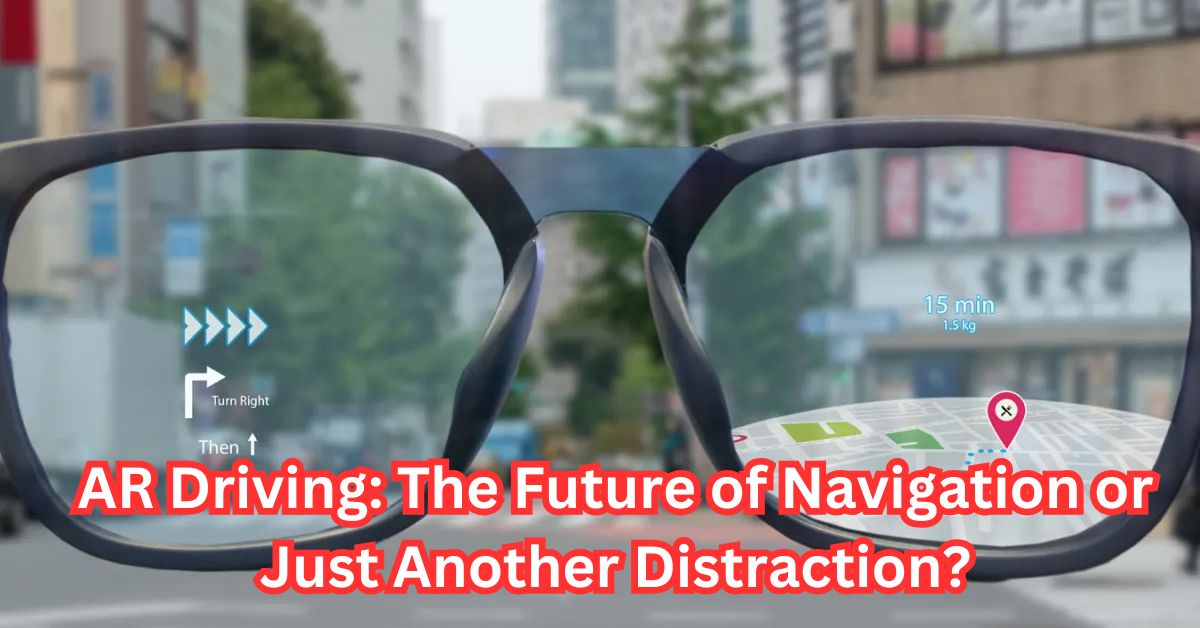AR Driving: The Future of Navigation or Just Another Distraction?
Augmented Reality (AR) is creeping into modern vehicles, promising to revolutionize how we navigate, stay safe, and even enjoy the drive. But is it genuinely helpful, or just another flashy gimmick? Let’s break it down.
🚗 What Exactly Is AR Driving?
AR driving overlays digital information onto the real world—usually through your car’s windshield or infotainment screen. Think of it like a video game HUD for your car, showing:
- Turn-by-turn navigation arrows on the road itself
- Hazard alerts (pedestrians, stopped cars, speed bumps)
- Lane guidance (so you never miss an exit again)
- Speed limits & traffic signs (floating right where you need them)
Companies like BMW, Mercedes, Hyundai, and even Apple (via CarPlay) are already rolling this out.
🔍 How Does It Actually Work?
- Cameras & Sensors track the road, traffic, and surroundings.
- GPS & Mapping Data pinpoints your exact location.
- AR Software blends digital info with real-time visuals.
- Display projects it onto your windshield (or dashboard screen).
Some systems (like BMW’s AR Head-Up Display) make it look like the graphics are floating 10 feet ahead of your car—so your eyes never leave the road.
✅ The Pros: Why AR Driving Could Be a Game-Changer
1. No More “Wait, Was That My Turn?”
- AR arrows paint the correct lane right on the pavement.
- Exit indicators appear before you’re in the wrong lane.
2. Enhanced Safety Alerts
- Pedestrian detection highlights people stepping into the road.
- Collision warnings pop up exactly where the danger is.
3. Smarter Speed Management
- Speed limit signs float in your view, so no more accidental speeding.
- Adaptive cruise control visuals show the car ahead and your following distance.
4. More Immersive EV Driving
- Hyundai’s AR system even shows charging stations in your path.
❌ The Cons: Why It Might Drive You Crazy
1. Overload Potential
- Too many floating icons = visual clutter.
- Some drivers report motion sickness from shifting AR elements.
2. Not All Systems Are Created Equal
- Cheap AR implementations lag or glitch.
- Bright sunlight can wash out windshield projections.
3. Still Needs Better AI
- False alerts (like “phantom” pedestrians) can be annoying.
- Rural roads with poor mapping? AR might struggle.
🚘 Which Cars Have AR Driving Now?
| Brand | AR Feature | Available In |
|---|---|---|
| BMW | AR Head-Up Display | i5, i7, X5, X7 |
| Mercedes | AR Navigation | EQS, S-Class |
| Hyundai/Kia | AR HUD | IONIQ 5, EV6 |
| Apple (CarPlay) | AR Navigation | Coming 2025 |
🤔 So… Is It Worth It?
👍 Get It If:
- You hate missing turns
- You drive in complex cities a lot
- You love cutting-edge tech
👎 Skip It If:
- You prefer minimalist dashboards
- You drive mostly familiar routes
- You get easily distracted
🔮 The Future of AR Driving
- Full Windshield AR (entire glass as a display)
- AI-Powered Alerts (predicting hazards before they happen)
- Gaming & Entertainment (imagine watching a movie on your windshield while parked)
🔥 What Do You Think?
- Would you use AR navigation, or is it too much?
- Tried it already? Love it or hate it?
- Team “Just give me a simple map”?
Sound off below—and may your future drives be augmented, not annoying. 🚗💨
📌 Follow for more tech & car deep dives—we test this stuff so you don’t have to.
(Disclaimer: Some AR features may require subscriptions. Because of course they do.)
TL;DR for the Impatient
✅ AR driving = digital info overlaid on the real road
✅ Helps with navigation, safety, and speed control
❌ Can be glitchy, distracting, or overpriced
🚀 BMW, Mercedes, Hyundai, and Apple are all-in
The future of driving is literally in your windshield. Ready or not.
